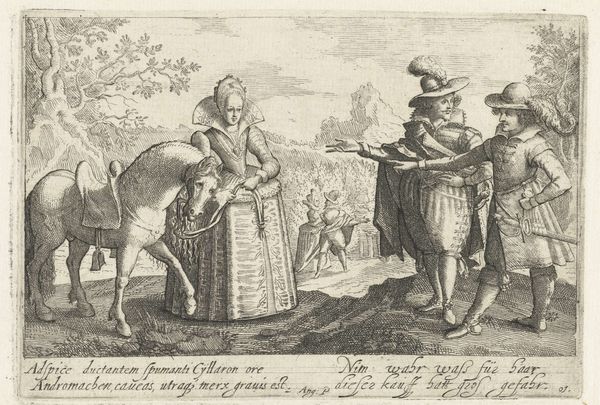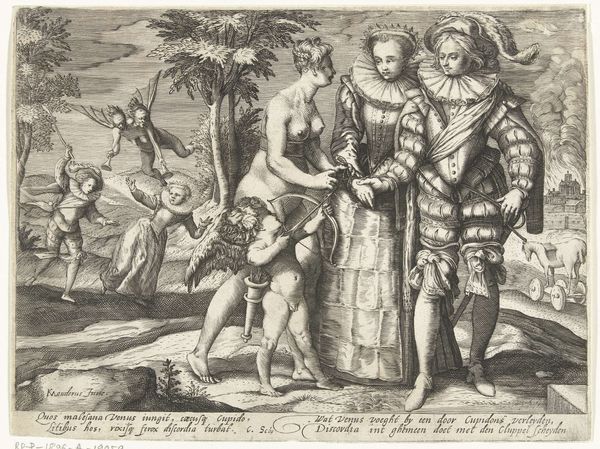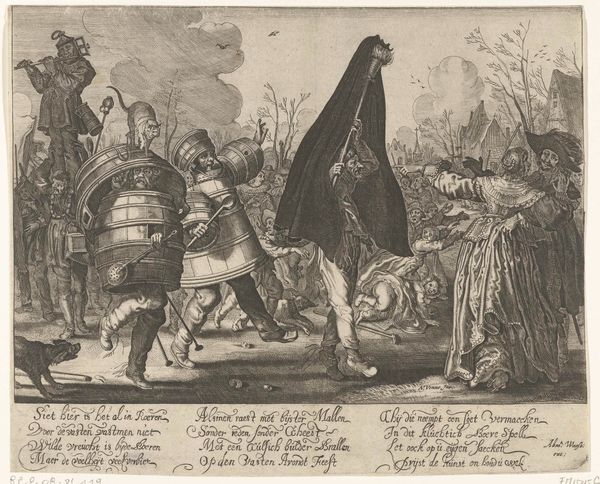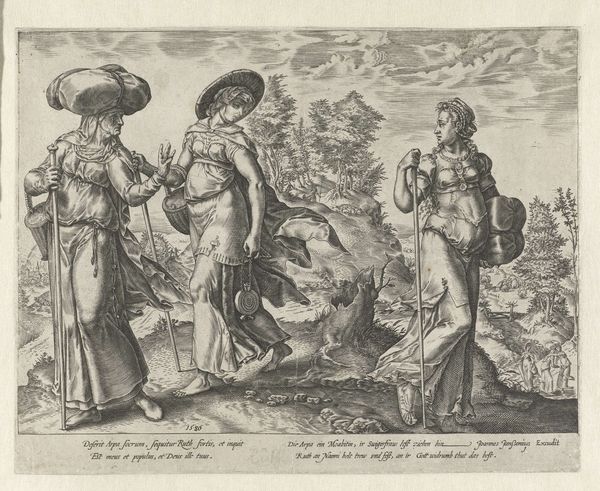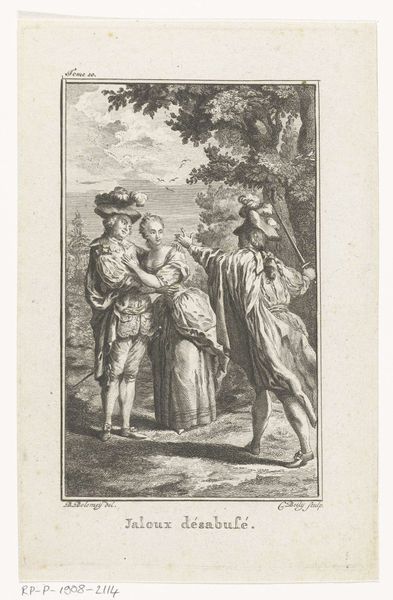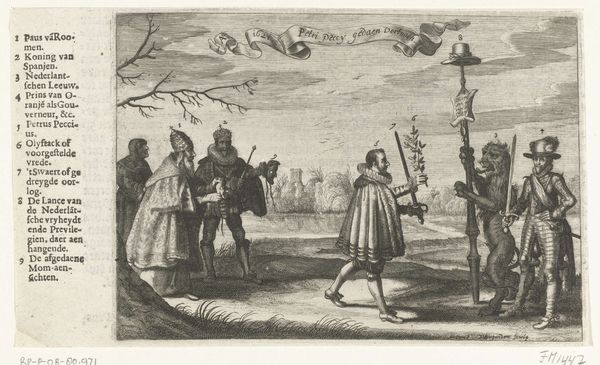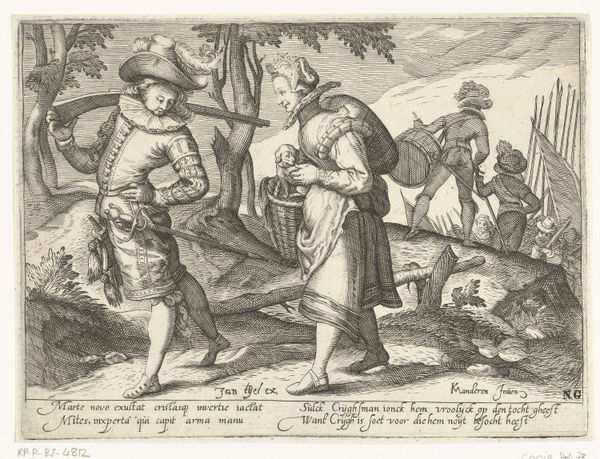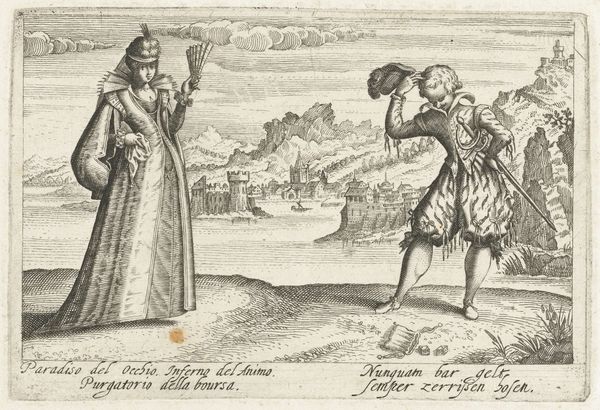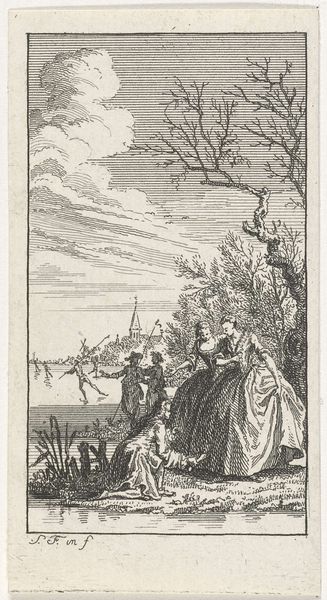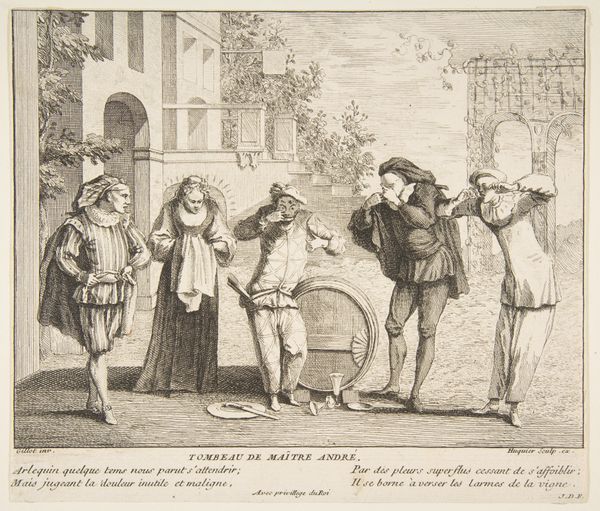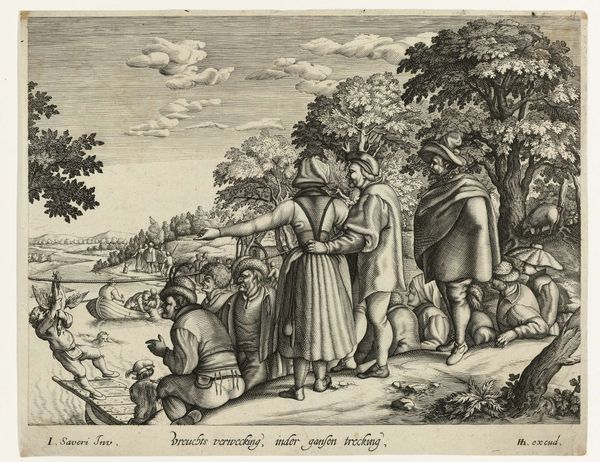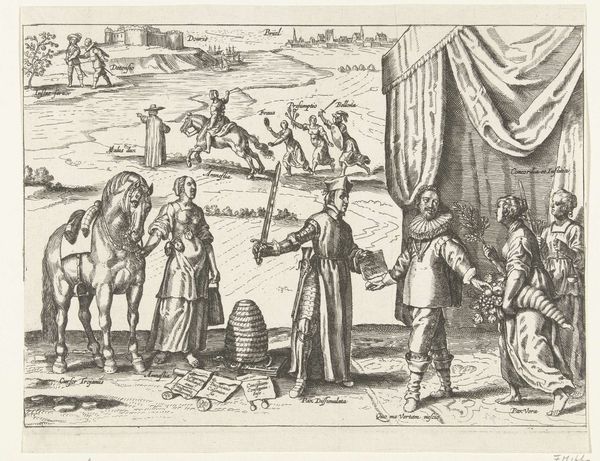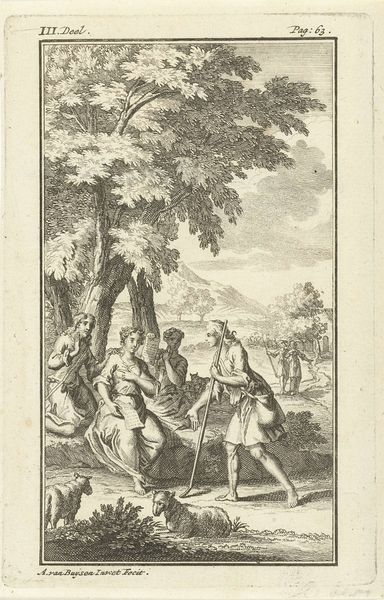
print, engraving
#
allegory
#
baroque
# print
#
landscape
#
figuration
#
engraving
Dimensions: height 92 mm, width 130 mm
Copyright: Rijks Museum: Open Domain
Editor: This is Jacob van der Heyden’s 1608 engraving, "Allegory of Love." It looks like a scene staged in a landscape. Cupid is aiming an arrow at what seems to be a couple. What strikes me is the inscription. It's written in both Latin and German. How do you interpret this work, especially given the historical context? Curator: This engraving, with its depiction of Cupid aiming his arrow amidst a couple and a fox, can be interpreted as a commentary on the complex, sometimes fraught, dynamics of early 17th-century relationships, and a broader historical view. The inclusion of both Latin and German points to the intended audience - a literate, educated elite navigating a changing social landscape. Editor: A changing landscape? What do you mean? Curator: The Baroque period, while visually extravagant, was a time of rigid social structures but emerging questions about individual autonomy and gender roles. Do you notice anything about the positioning and the posture of the figures? The fox next to the male figure for example, the couple standing in opposite sides? Editor: I see. The man stands tall with what seems to be a wild fox beside him, whereas the woman stands slightly behind the boy as if unsure. Almost as if, even as love aims to strike them, a traditional role divide shapes their dynamic. Is that right? Curator: Precisely. Consider how the engraving invites conversations about marriage as a social construct during that era, love as a force negotiating those structures, and the quiet disruptions happening beneath the surface. The inscription and symbolism create an engagement with broader themes of gender, power and social order. What is love and desire within those boundaries? Editor: This reframes my understanding completely. I now see how the artwork operates as an intersectional critique, mirroring and challenging historical norms simultaneously. Thanks for sharing your insight. Curator: And thank you for offering such thoughtful observations. Looking at art through an intersectional lens really deepens our engagement.
Comments
No comments
Be the first to comment and join the conversation on the ultimate creative platform.
